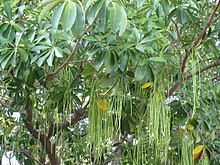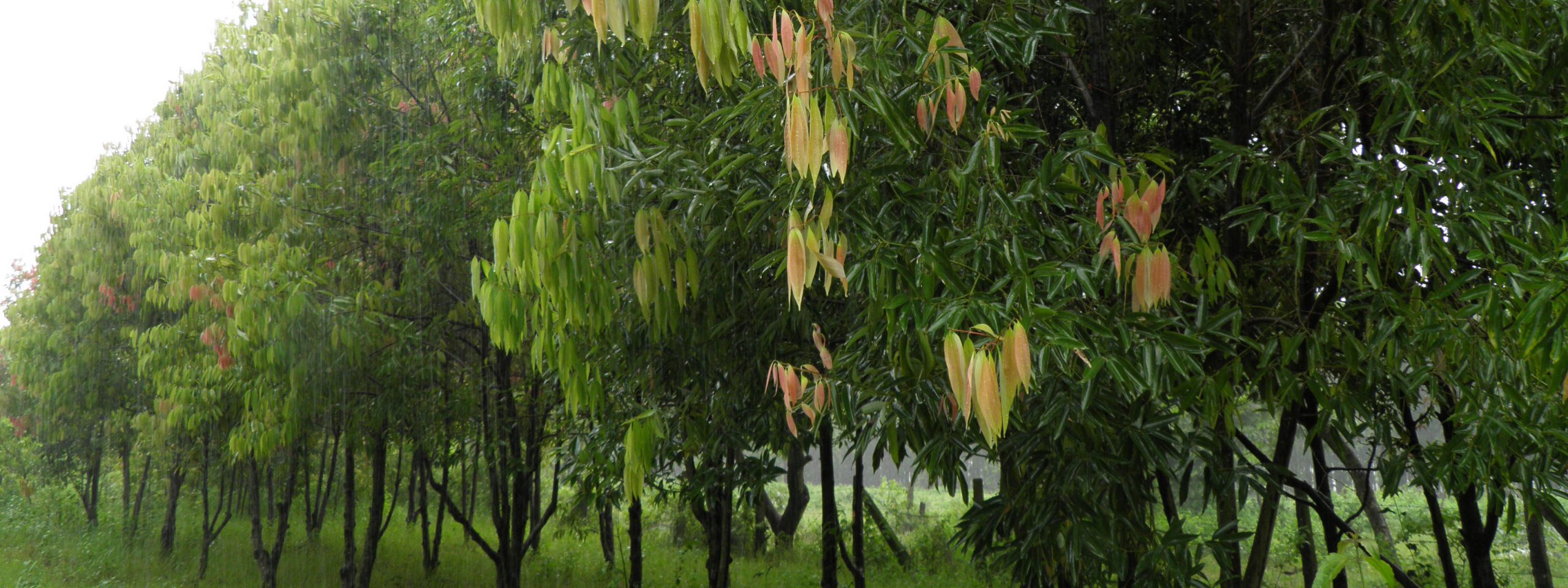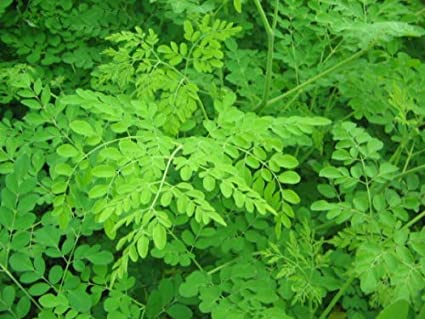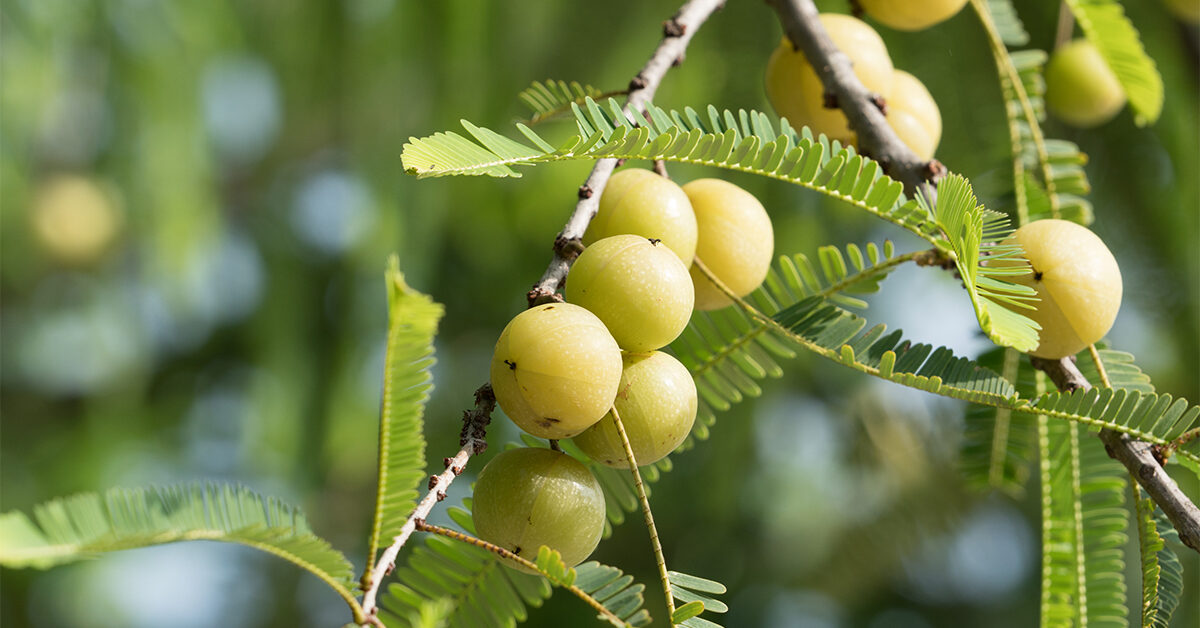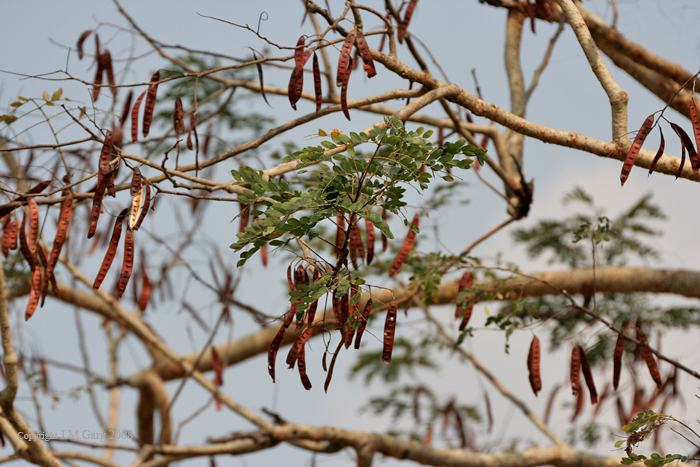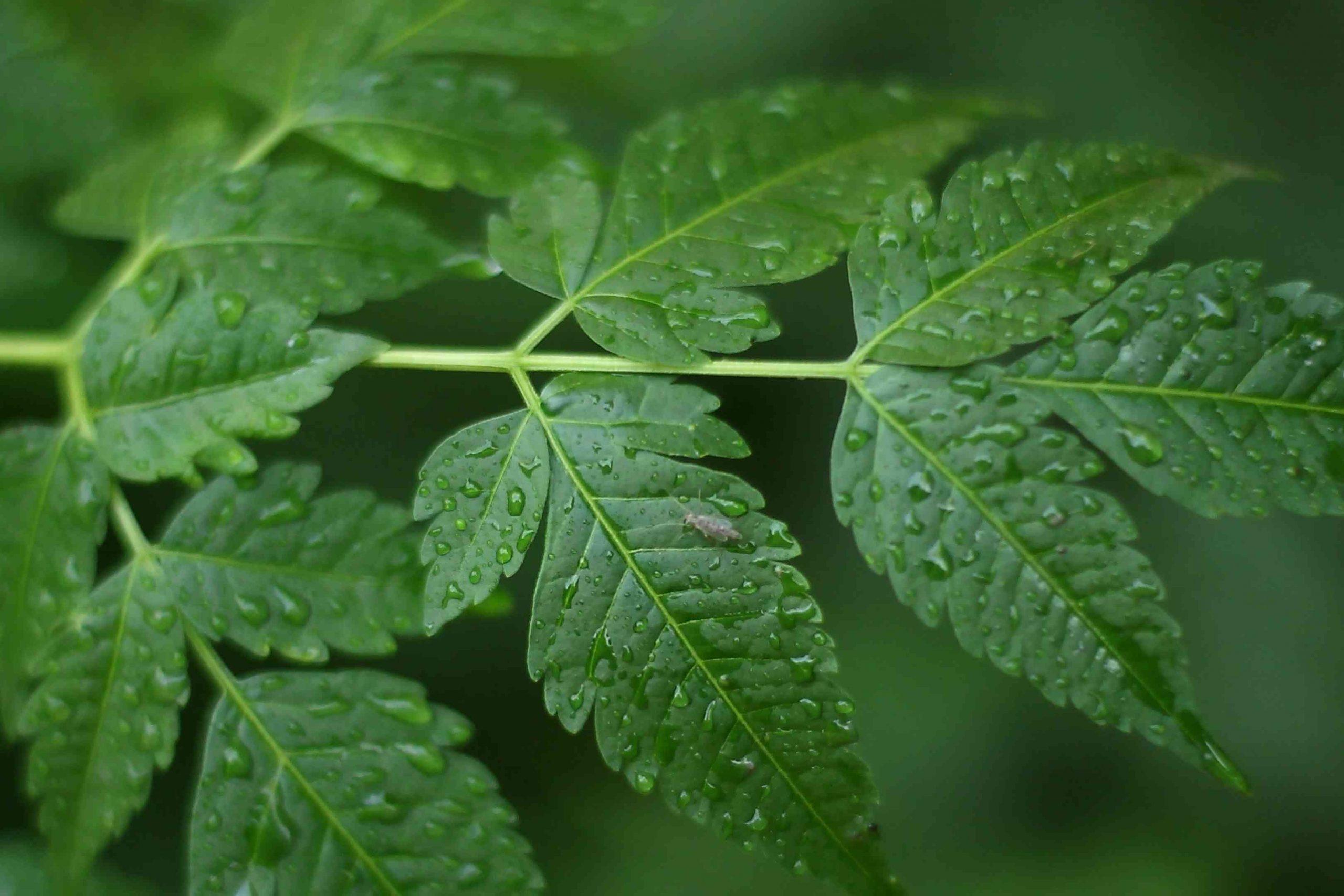Chhatiwan
(Alstonia scholaris)
English name: Devil tree
Family: Apocynaceae
Origin and distribution
It is found in tropical regions of E. Asia – China, Indian subcontinent, Myanmar, Thailand, Cambodia, Laos, Vietnam, Malaysia. Indonesia, Philippines to Australia and the Solomon Isles. In Nepal, it is found in Tropical and sub-tropical belts of Terai region.

Description
Height at maturity: Alstonia scholaris is a medium to large tree, to about 40 m high with a somewhat tessellated corky grey to grey-white bark. The boles of larger trees are strongly fluted to 10 m.
Form: The trees are often deciduous, losing their leaves for brief periods at irregular intervals. The tree coppice freely with a short coppice rotation of 6 – 8 years.
Flower and flowering: Trees only flower after marked periods of dry weather. When in flower, they are often surrounded by pollinating bees and butterflies. The fruits open on the tree and the seeds, which have a tuft of silky hairs at each end, are dispersed by wind.
Silvicultural Characteristics
Cultivation: They best thrive in moist lowland tropical and subtropical areas, it is found at elevations from sea level to around 900 metres. It grows best in areas that have a mean annual temperature in the range 12 – 32°c, and a mean annual rainfall of 1,200 – 1,400 mm. It grows most commonly in monsoonal areas where the mean annual rainfall can range between 1,000 – 3,800mm
Soil: It prefers a sunny position in a fertile, moist, but well-drained soil. Plants are tolerant of a range of soils, and have been grown successfully on shallow soils over coral, where it is only a small tree.
Propagation and plantation
Regeneration can be enhanced by enrichment planting using the strip system, but sufficient opening of the canopy is essential for optimal growth of the seedlings. Seeds are best sown in a sunny position. The germination rate of fresh seeds is high, nearly 100%, with sprouting commencing after 12 days and continuing for about 3 months. Seeds can be stored in closed tins for 2 months, maintaining a germination rate of 90%. The seeds are difficult to collect because the fruits open while still on the tree. A. scholaris has been grafted for vegetative reproduction.
Products and uses
The latex provides a good quality chewing gum while bark yields fibre and flowers produce an essential oil. The bark is a bitter, astringent, alterative herb that lowers fevers, relaxes spasms, stimulates lactation and expels intestinal worms. It is anthelmintic, anticholeric, antispasmodic, astringent, emmenagogue, febrifuge, tonic and vulnerary.
Urban/Agroforestry uses
The tree is often exploited for its valuable timber, and is considered to be a good timber tree in moist, protected environments. It is also often planted for its ornamental and shade value.
Other readings
Tropical Plants Database, Ken Fern. tropical.theferns.info. 2021-04-21.
Baliga, M. S. (2010). Alstonia scholaris Linn R Br in the treatment and prevention of cancer: past, present, and future. Integrative cancer therapies, 9(3), 261-269.
